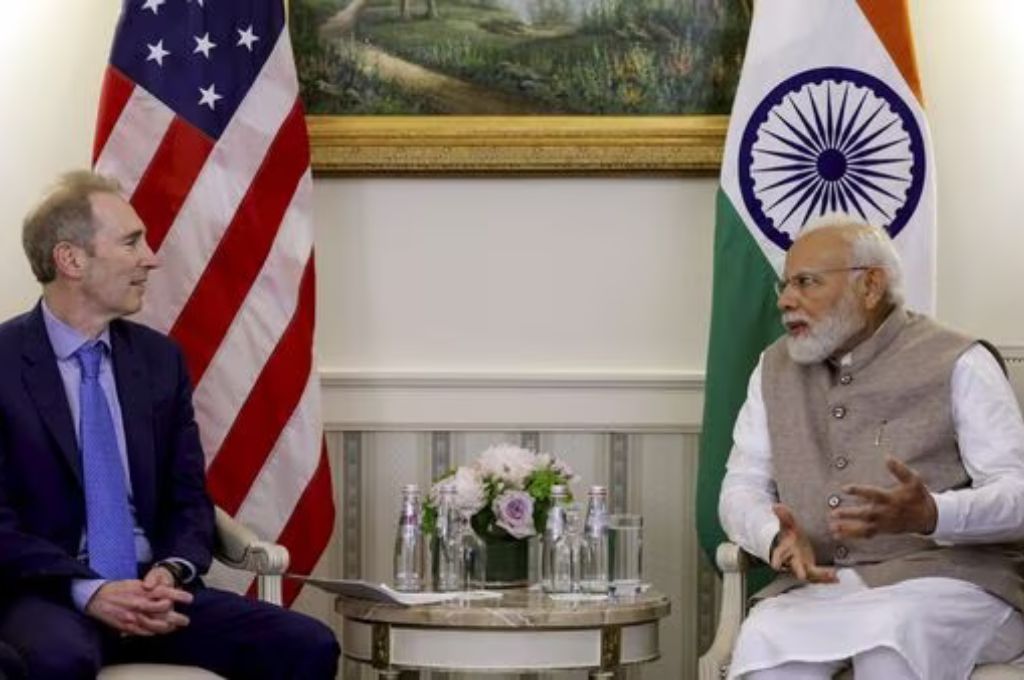Amazon, the global e-commerce giant, recently announced its plan to invest an additional $15 billion in India, a decision with far-reaching implications for the Indian retail landscape. Given the backdrop of complex legal battles, stringent regulatory norms, and intense competition with domestic conglomerates like Reliance Industries, this decision seems bold. This article delves into the complexities surrounding Amazon’s massive investment and its potential impact on the Indian retail sector. A key argument is that despite the numerous challenges, Amazon’s investment has the potential to bring about significant changes in the Indian retail industry, offering unprecedented benefits to Indian consumers.
Amazon’s Strategic Focus on India
India’s retail market, estimated at $900 billion, is a compelling opportunity for Amazon, which has faced a formidable challenge in China from local player Alibaba. Jeff Bezos, Amazon’s founder, once identified India as the company’s fastest-growing region, highlighting its strategic importance. The decision to invest an additional $15 billion is part of Amazon’s broader strategic plan to consolidate its position in the Indian market and compete effectively with local players.
Also Read: Boost for India’s Digital Economy: Amazon’s $15Bn Investment after Modi-Jassy Meet
A key indicator of Amazon’s intent and commitment to the Indian market is its ongoing legal tussle with Future Group. The conflict stemmed from Future’s sale of its retail assets to Reliance Industries, which Amazon contested based on its pre-existing agreements with Future. This dispute underscores Amazon’s aggressive strategies and intent to maintain a strong foothold in the Indian retail sector, even in the face of complex legal challenges.
Regulatory Headwinds and Amazon’s Business Model
While Amazon’s ambition to gain dominance in the Indian retail sector is clear, its path is fraught with regulatory challenges. The Indian government’s tightening e-commerce rules, aimed at protecting consumer interests and fostering fair competition, pose substantial constraints for Amazon’s business model. For instance, Amazon’s indirect stakes in its sellers like Cloudtail and Appario could potentially be impacted by these new norms. Consequently, these regulations may compel Amazon to rethink and possibly remodel its operations in India.
Amazon’s move to invest an additional $15 billion, despite these challenges, appears audacious. However, in the context of India’s massive retail market potential, this investment is a calculated risk. Amazon has already invested $6.5 billion in the Indian market, and this new investment will further strengthen its capacity to capture a significant share of the market.
The Amazon-Reliance Competition
A crucial dynamic to consider is the intense competition between Amazon and Reliance Industries, led by Indian billionaire Mukesh Ambani. Reliance, with its deep understanding of the Indian market, extensive offline retail network, and rapidly growing e-commerce platform JioMart, poses a formidable challenge to Amazon.
However, Amazon’s global expertise in e-commerce, coupled with its robust logistics network and renewed investment, sets the stage for an interesting competition. This competition is likely to drive innovation and enhance consumer choices, fostering a shift towards digitization in the Indian retail sector. This trend has already gained momentum due to the COVID-19 pandemic, and Amazon’s additional investment will further accelerate this process.
Potential Impact on the Indian Retail Landscape
The potential impact of Amazon’s additional $15 billion investment on the Indian retail landscape is substantial. First, Amazon’s enhanced capacity could facilitate greater inclusion of small and medium-sized enterprises (SMEs) in its supply chain, offering them broader access to the national market and potentially to international markets. Amazon’s e-commerce platform could enable these SMEs to overcome traditional geographic and logistic constraints.
Second, Amazon’s investment could catalyze further digitization in the retail sector, enhancing its efficiency and customer orientation. It could stimulate innovations in areas such as delivery logistics, digital payments, and customer experience, setting new benchmarks for the industry.
Third, this competition could potentially lead to lower prices and a greater diversity of choices for Indian consumers, as both Amazon and Reliance strive to attract and retain customers.
Afterword
Amazon’s massive investment promises significant changes for the Indian retail industry. Despite facing considerable regulatory and competitive challenges, Amazon’s commitment is an affirmation of the untapped potential of the Indian market. As the intense contest between Amazon and Reliance unfolds, one thing remains certain – the ultimate beneficiary of this retail transformation will be the Indian consumer. The evolving narrative of this high-stakes battle serves as a testament to the dynamism of the Indian retail sector and its growing prominence on the global stage.
















